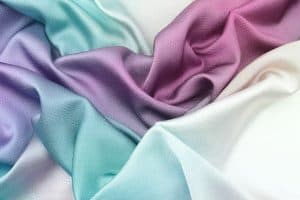Table of Contents
- Introduction to Fiber Technology in Textiles
- The Genesis of Modern Fibers
- The Rise of Sustainable Fibers
- Exploring Natural Fibers
- Regenerative Fibers
- Understanding High-Performance Fibers
- Sustainability and Eco-friendly Fibers
- The Science Behind Fiber Manufacturing
- The Significance of Smart Textiles
- Sourcing Strategies for Quality Fibers
- Consumer Trends Influencing Fiber Technology
- The Future Vision for Textile Fibers
- Challenges and Opportunities
- Closing Thoughts: Textiles Tailored for Tomorrow

Introduction to Fiber Technology in Textiles
Textile innovation has been a fundamental pillar of human progress. Fibers, the building blocks of fabrics, have been developed, improved, and refined over the centuries. The transformation from natural to synthetic fibers marked a significant turn in the industry, introducing materials that could withstand harsh conditions, adapt to various uses, and push the envelope of fashion and functionality.
The Genesis of Modern Fibers
Modern fibers owe their existence to a culmination of historic breakthroughs, including the introduction synthetics like nylon and polyester. These materials represented a departure from traditional cotton and wool, embodying the essence of human ingenuity. Understanding the composition, potential applications, and limitations of various fibers is crucial for textile technology’s progress and, ultimately, fabric wholesalers who distribute these progressive materials.
The Rise of Sustainable Fibers
Traditional textile production has often relied on resource-intensive processes and materials with adverse environmental effects, such as synthetic fibers derived from petrochemicals and conventional cotton grown with heavy pesticide use. However, the rise of sustainable fibers offers a promising alternative. These fibers are sourced from renewable resources and produced using environmentally friendly methods, making them a more sustainable choice for consumers and the planet.
Exploring Natural Fibers
Natural fibers have long been valued for their comfort, breathability, and biodegradability. Materials such as organic cotton, linen, hemp, and bamboo have gained popularity as sustainable alternatives to conventional textiles. These fibers are grown without synthetic pesticides or fertilizers, reducing the environmental impact of cultivation. Additionally, they often require less water and energy to produce compared to their conventional counterparts.
Regenerative Fibers
Regenerative fibers go beyond sustainability by actively contributing to environmental restoration and regeneration. Materials such as Tencel Lyocell and Modal are made from sustainably sourced wood pulp from eucalyptus and beech trees. These fibers are produced using a closed-loop process that recycles water and solvents, minimizing waste and pollution. Additionally, regenerative agriculture practices are being implemented to enhance soil health and biodiversity, further reducing the environmental footprint of fiber production.
Understanding High-Performance Fibers
High-performance fibers like Kevlar and carbon fiber have heralded a new era in textiles, one where the material’s endurance, resilience, and functionality are prioritized. These fibers shape industries, enabling safety, aerospace, and sports advancements. Their development and dissemination are a testament to the relentless pursuit of superior, durable, and versatile textiles.
Sustainability and Eco-friendly Fibers
The textile industry has shifted focus towards generating less waste and reducing its carbon footprint, leading to increased use of materials like recycled polyester. This push towards sustainability nods to ecology and responds to calls for environmentally responsible manufacturing. It’s a conscious effort to preserve natural resources and minimize pollution, ensuring the industry’s longevity and alignment with eco-friendly practices.
The Science Behind Fiber Manufacturing
The complexity behind turning raw materials into fibers suitable for textile manufacture is a compelling story. Polymers and natural fibers undergo transformative processes to emerge as yarns woven into the fabric of society, both literally and metaphorically. Material science stands at the helm of this transformation, driving innovations that redefine the capabilities and applications of textiles.
The Significance of Smart Textiles
Smart textiles encapsulate the blending of technology with traditional fabric-making. These textiles, laced with electronic components, have the incredible potential to interact with their environment, alleviating the interest in wearable technology. They can perform many functions, including changing color, heating up in response to external temperatures, and even monitoring health indicators, making everyday clothing intelligent and responsive.
Sourcing Strategies for Quality Fibers
In the race to keep up with innovations, sourcing quality fibers has become more complex. It requires a clear understanding of the sourcing landscape, engendering partnerships and collaborations across the globe. Fabric wholesalers play a pivotal role in this ecosystem, curating a selection of fibers that meet the stringent demands of modern textile applications and consumer preferences.
Consumer Trends Influencing Fiber Technology
The shift in consumer sentiment towards sustainable, function-forward clothing has reverberated throughout the textile industry. The desire for apparel that stands the test of time in terms of style, comfort, and ecological impact steers the direction of fiber technology. Aligning with these trends is paramount for the industry to thrive and stay relevant.
The Future Vision for Textile Fibers
The envisaged future is where textile fibers are not confined to the past paradigm of woven threads. With the convergence of biotechnology, nanotechnology, and material science, fibers of the future may come with entirely new properties. They may be self-repairing, change structure in response to stimuli, or be fully biodegradable, further transforming the landscape of wearable fabrics.
Challenges and Opportunities
While sustainable fibers represent a positive step towards a more eco-friendly textile industry, challenges remain. Scalability, cost competitiveness, and consumer awareness pose barriers to widespread adoption. However, increasing consumer demand for sustainable products, technological advancements, and industry initiatives present opportunities for innovation and growth in the sustainable fiber market.
Closing Thoughts: Textiles Tailored for Tomorrow
As we look forward to a future where textiles are tailored for tomorrow, the essence of innovation remains. Weaving together consumer needs, sustainability, and scientific ingenuity creates a fabric that tells a story. It is a story where the past, present, and future of textile technology converge to craft textiles poised for the next chapter of human advancement.





